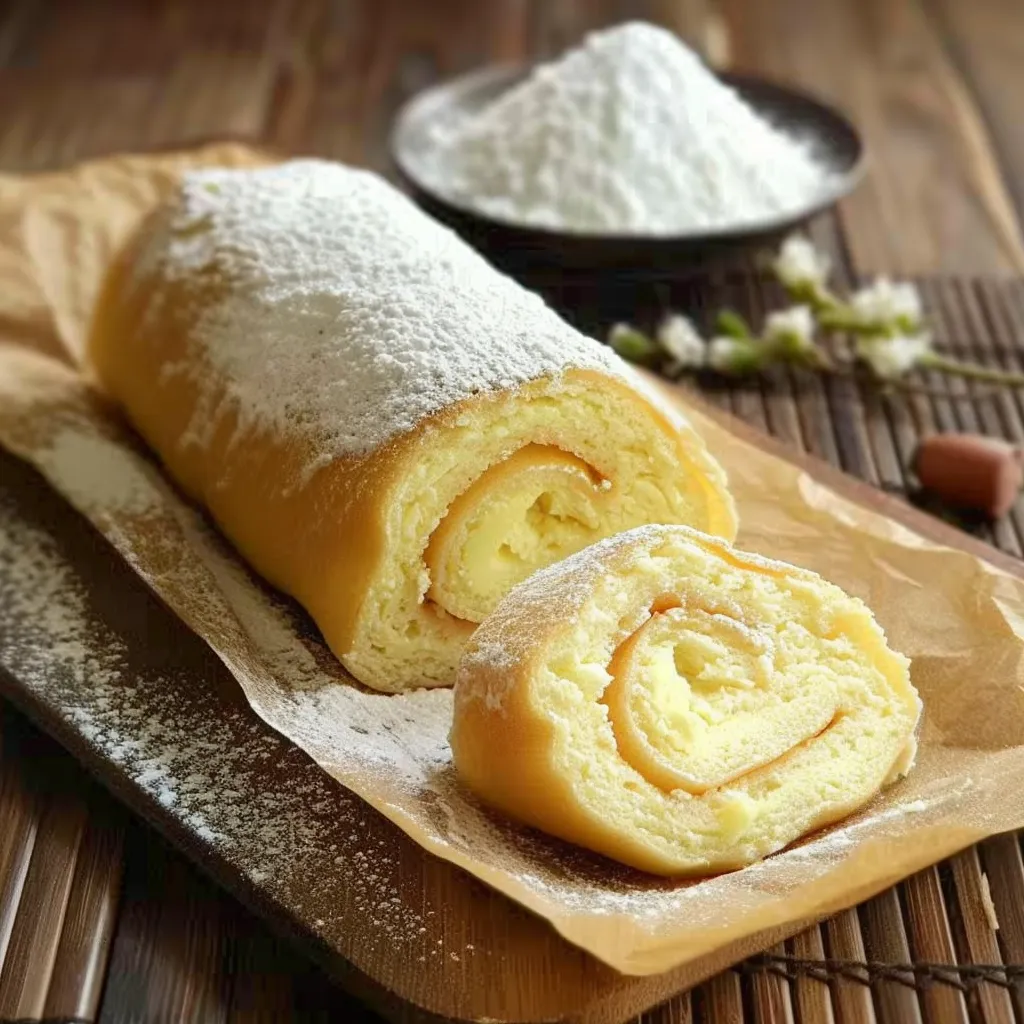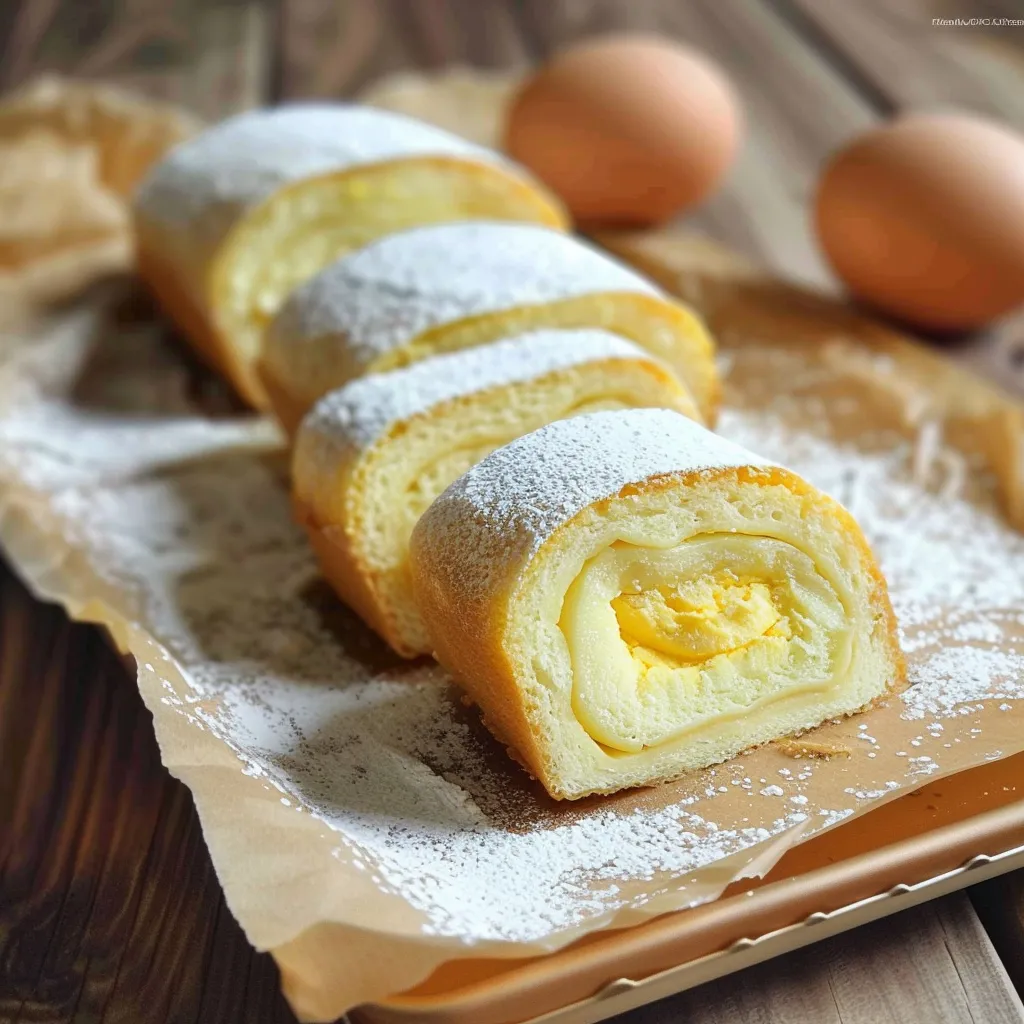 Pin it
Pin it
Japanese cotton sponge cake represents the perfect balance of lightness and precision in Japanese pastry making. Its cloud-like texture transforms a simple Yule log into an elegant creation that seems to float. This cake beautifully combines European baking traditions with Asian delicacy. Each time I prepare it, I'm amazed by how it manages to be both incredibly light yet structurally sound.
During a recent pastry class, my students were amazed by this cake's ethereal lightness. One participant mentioned she never thought such an airy texture was achievable in a home kitchen.
Essential Ingredients and Their Roles
- Eggs - The key ingredient. Use medium eggs (53-63g) at room temperature. Temperature is crucial - cold eggs won't whip properly, while too warm eggs become unstable
- Flour - Choose low-gluten cake flour. Double sifting is essential - first to aerate, then to ensure smoothness
- Oil - Use a neutral oil like grapeseed or refined canola. It provides moisture without heaviness
- Milk - Whole milk at room temperature. Contributes to moisture and tender texture
Step-by-Step Instructions
- Whipping Egg Whites
- Perfect meringue is essential:
1. Ensure bowl is completely clean and grease-free
2. Begin whipping at low speed for 30 seconds until foamy
3. Gradually increase to medium-high speed
4. Add sugar in three stages, 30 seconds apart
5. Whites are ready when they form soft peaks that hold their shape - Preparing Egg Yolks
- - Beat yolks with sugar at high speed for 5 minutes
- Mixture should triple in volume and become pale
- Ribbon test should take several seconds to disappear
- This stage creates the cake's structure - Folding Technique
- 1. First third of whites: Mix vigorously to lighten base
2. Second third: Fold gently with spatula
3. Final third: Incorporate very carefully to maintain air
4. Final batter should be smooth yet airy - Baking Instructions
- - Preheat oven to 180°C for 20 minutes minimum
- Spread batter evenly
- Check thickness with ruler (about 1 cm)
- Bake exactly 12-15 minutes - Rolling Process
- 1. Ready damp kitchen towel
2. Turn hot cake onto towel
3. Carefully remove parchment
4. Roll immediately with towel
5. Cool completely while rolled
Years of experience have taught me that lightly misting the parchment paper before rolling prevents cracks and makes removal easier.
Creative Variations
Matcha Version
- Replace 10g flour with culinary grade matcha
- Add pinch of salt to enhance flavor
- Perfect with white chocolate ganache
Chocolate Version
- Substitute 20g flour with unsweetened cocoa powder
- Add 10ml extra milk to compensate
- Ideal for traditional Yule logs
Troubleshooting Guide
- Cracking cake: Either overbaked or rolled too slowly
- Dense texture: Underwhipped egg whites
- Sticking issues: Low-quality parchment paper
Final Thoughts: Japanese cotton sponge cake perfectly demonstrates the marriage of technique and delicacy. While it requires precision, the results justify the effort. Each time I make it, I'm reminded how it elevates a simple dessert into something extraordinary. It truly represents the fusion of French pastry craft with Japanese refinement.
Storage and Serving
- Keeps 24 hours at room temperature when rolled
- Maintains texture up to 3 days refrigerated
- Rest 30 minutes before serving
- Freeze only when completely cooled
 Pin it
Pin it
Filling Guidelines
Best filling options include:
- Light buttercream
- Fruit mousses
- Whipped ganache
- Diplomat cream
Choose filling texture that complements the cake's delicate structure.
Frequently Asked Questions
- → Why’s my cake turning out hard?
- This happens if you stir the egg whites too forcefully or bake it too long. Be gentle when mixing and keep an eye on the oven.
- → How can I get the fluffiest texture?
- The trick is whipping the egg whites until they’re firm and folding them into the batter very softly to avoid losing the air.
- → Can this cake be frozen?
- Yep, you can freeze Japanese Cotton Cake for about a month. Make sure it’s fully cooled before storing it in the freezer.
- → What are some flavor variations?
- You can mix in vanilla extract, add custard cream, or sprinkle powdered sugar for different tastes.
- → How should I serve this cake?
- It’s best served at room temperature or slightly warm, alongside tea or coffee. You could also top it with whipped cream or jam.
